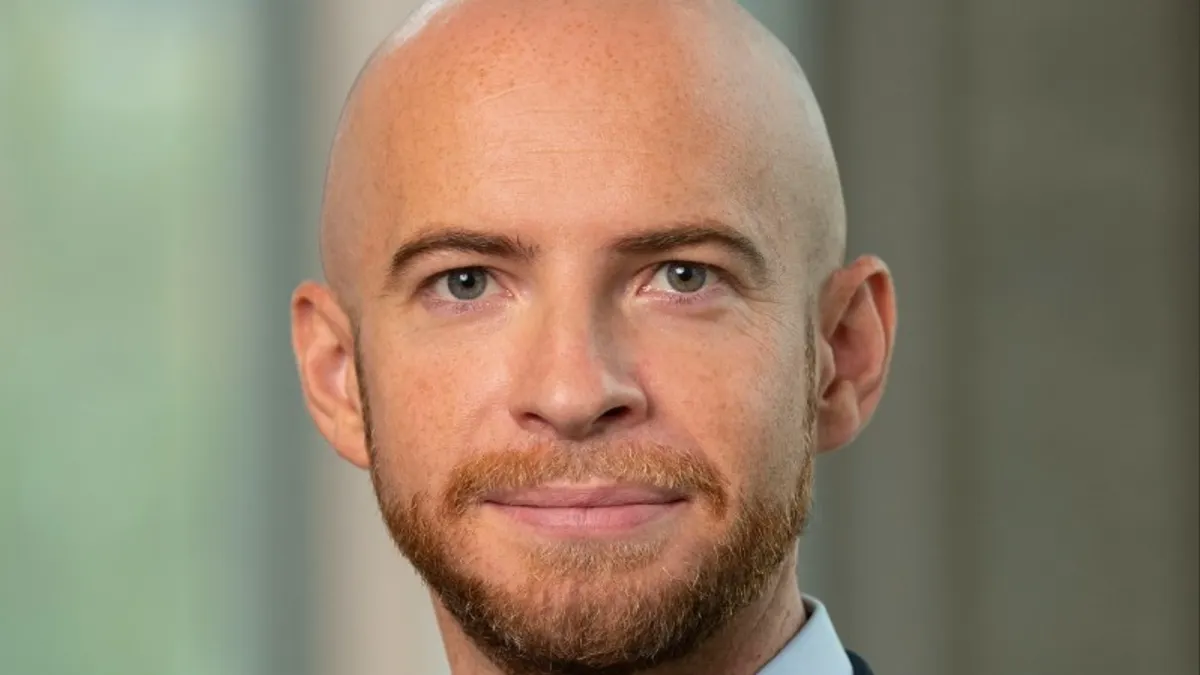After years of under-performance and stagnant share prices, the pharma industry is starting to find its feet again as evidenced by a steady pickup in M&A. But the battle isn’t over, and companies looking to keep their heads above water need to think long and hard about their focus, their risk and their reputation among shareholders, according to analysts.

Despite hints of a rebound, leaders across sectors are still wallowing in doubt about the future — 45% of CEOs surveyed by professional services and accounting firm PwC said they felt their company would not be viable a decade from now, up from 40% the year before. And with the pharma industry trailing behind the S&P 500 by 10 percentage points in the last five years, the sting is even more acute, said Greg Rotz, U.S. pharma & life sciences advisory leader at PwC.
There are many reasons for that, but near-term earnings growth isn’t one of them, Rotz said.
“While our sector has returned single digits and total shareholder returns, it's actually been driving double-digit earnings growth,” Rotz said, pointing out that long-term investment has not been in step with near-term earnings. “Investors are losing faith in the confidence of the pharmaceutical business model, looking out into time.”
This declining investor confidence in the future performance of pharma companies comes down in part to the competitive saturation of the market, Rotz said, pointing out that “great science alone is not enough to create outperformance.”
As pharmas navigate the next steps of a potential economic upswing, they need to make the right kinds of deals to secure new market “white spaces” — however risky it is to explore the unknown — to bring investors back into the fold, Rotz said.
‘Fundamental economics’
For Rotz, the answer comes back to the “fundamental economics” of pursuing not only the most promising science, but doing so in areas where no one else has arrived first.
“There are so many products chasing the same spaces, driving up competition, and we know from the basics of economics that anytime you have increased competition, you generally have lower returns,” Rotz said. “We know that great science is generally going towards smaller patient populations, as we have gotten better at precision medicine — even the best science put into that environment, compared to the environment of five or 10 years ago, is going to struggle to generate the same level of returns.”
Pharma R&D expenditure grew almost 50% between 2018 and 2023 to a record $161 billion, according to an IQVIA report. That’s good news for patients, but with so many companies scrambling for the same targets, it can be tough to stand out, Rotz said.
“In this environment of increased scientific inquiry and more trials, it's important to step back and say: How many of those are chasing validated pathways that already exist?” Rotz said. “How many of those are chasing therapeutic categories where there are already breakthrough standards of care, versus how many of those are going into the next frontiers of neuroscience or the next frontiers of fighting resistant bacteria, and so on.”
Introducing more risk into the portfolio could help pharmas see better returns, despite the potential for failure, Rotz said.
“It feels safer to go after validated pathways in the moment when you think about scientific risk, but do these models have enough risk in them?” Rotz said. “Are we tied into all the leading edge science coming out of academia and in a position to know where those next frontiers are really going to be so that we can get on them even faster?”

And while diversification can be tempting for the sake of spreading failures thin, companies with a sharper focus tend to be more appealing to investors, said Nicole Daley, a life sciences and M&A partner at law firm Allen & Overy.
“With companies that are more honed in and focused, there's also the risk that the thing you're most focused on then maybe doesn't work or maybe doesn't rise to best in class. But being more focused as opposed to more diverse in terms of what prospects you're thinking about seems to be the more appealing route,” Daley said.
Additive dealmaking
As M&A picks up after the pandemic lull, how can executives make the right kinds of deals to launch them into a more focussed approach that embraces risk and new frontiers?
“We think of M&A as a means to accelerate strategy, but M&A isn’t an end in itself,” Rotz said. “Executives at today’s pharmaceutical companies need to find the fundamental narrative of their strategy to differentiate themselves — once that’s clear, we expect to see M&A playing a big role in helping accelerate those strategies and fill in the products and portfolio underneath that strategy.”
A trend many large drugmakers have taken particularly seriously is divesting business arms to focus more wholly on innovation. J&J, Pfizer, Merck & Co. and more have sold off sizable branches in the last several years to put greater emphasis on more groundbreaking areas. It’s a strategy that pays off down the road, Rotz said.
“The more you can create coherence between your capabilities, your strategy in the market and the products and portfolio you have, the faster you can go and the more value you can create,” Rotz said. “That's the calculus that has been happening, and it’s a good ongoing exercise for management teams to be undertaking.”
“Investors are losing faith in the confidence of the pharmaceutical business model, looking out into time.”

Greg Rotz
U.S. pharma & life sciences advisory leader, PwC
But as companies whittle themselves down to become sleeker R&D machines, they need to build up in the spaces where they’ve chosen to focus, Rotz said. And that has changed the face of today’s dealmaking strategies.
“The deals are strategic and trying to help companies solve an issue — we haven’t seen the kind of large-scale megamergers of the past, and I think in today's environments, and specifically in today's regulatory environment, those deals are harder to come by,” Rotz said. “But the need still exists to build out portfolios and maintain access to great science, with a more surgical basis. We see a lot of companies saying their No. 1 priority is to execute deals to solve specific problems.”
Some of the more high-profile deals that embody this strategy include Amgen’s $28 billion purchase of rare disease drugmaker Horizon Therapeutics in October, and Pfizer’s $43 billion acquisition of antibody-drug conjugate specialist Seagen earlier in 2023.
Daley points to Bristol Myers Squibb’s $14 billion purchase of neuroscience biotech Karuna Therapeutics in December as another example of this kind of additive dealmaking.
“If you’ve got a really promising therapy that seems like it’s going to continue to drive things … that momentum is important to keep going,” Daley said. “And after a couple of years of there not being a whole lot [of deals], it really doesn’t seem to be slowing down.”
As for building and maintaining trust among investors that these deals will fuel growth, Rotz has fundamental advice for executives: Be real.
“It's in everyday actions, when the pressure is on, that we see companies either enhancing and building trust or losing trust very quickly, and leaders need to … know that [pharma’s] trust generally [from] society is declining,” Rotz said. “So you don't get the benefit of the doubt, and your authentic engagement with stakeholders is critical.”


















